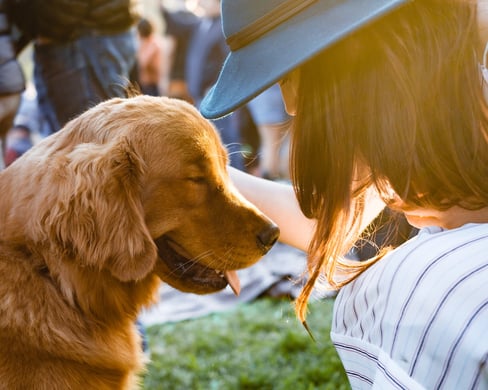The Best Way to Greet Your Pet After Their Long International Journey
Updated on: December 13, 2022 | Author: Starwood Pet Travel

After all the work you’ve done to organize your international move, the final piece is a long journey to your new home. In all likelihood, you and your precious pet will be separated for the journey, even though you may be on the same flight. And as every doting pet parent knows, you don’t need four legs to suffer from separation anxiety. The entire time, you’ll be looking forward to that reunion.
So what’s the best /way to greet your sweet kitty or canine after their lengthy international flight? With hugs, sloppy kisses, and lots of love, of course. Jump around. Wag your tail. Purr ferociously. Oh, wait – that’s not you, that’s what your pet will be doing. Even dogs and cats who normally shy away from such excessive displays will be as glad to see you again as you are to see them.
Do our pets really miss us?
Studies show that dogs grieve when you’re gone longer than they expected. (If they’re used to your daily gone-to-work routine, that’s OK. They know you’re coming back.) Being separated during a long international journey certainly qualifies as unusual. As a result, researchers say you can probably expect an even more emotional greeting from your pooch than normal.
Dogs recognize their humans by sight and the sound of your voice, but when they sniff you and detect your familiar scent, that clinches the deal for them. It’s definitely you, and you’re back! Some dog behaviorists suggest that the presence of multiple familiar people (your whole family) can make the reunion an even bigger event for your pup. No doubt for you, too.
Touch that dog!
A group of Swedish researchers conducted a hormonal study of dogs. They compared levels of oxytocin (the “love” hormone) and cortisol (the “stress” hormone) as the dogs were greeted in different ways after a period of separation from their human familiars. They found that, upon reunion, all the dogs began to wiggle and wag the minute they spied their person. Instantly, their oxytocin levels increased and cortisol levels decreased. However:
- Dogs who weren’t greeted at all were so disappointed they sought attention from unknown people. Their oxytocin levels plummeted, and cortisol levels rose dramatically.
- Dogs who were greeted only verbally were happier, with greater oxytocin levels.
- Dogs who were greeted verbally and with touching had the highest oxytocin levels.
The study concluded that “although the sight of a familiar person is a positive event for a dog, and the sound of that person’s voice is better, it is actually the sensation of being touched by that person which helps to boost the level of good feeling in the dog and allows it to carry over for much longer than just the moments when dog and loved one reunite.”
Well, no surprises there! Turns out your multi-sensory greetings have been right on the mark all along. At least where your dog is concerned. Your furry feline may appreciate a more restrained approach. But you already knew that, too, didn’t you?
What’s the deal with cats?
Some felines love to cuddle and be with their person. Others are more aloof. But all cats can experience separation anxiety, just as dogs (and you) do. Your precious Persian will be happy to see you again, but they may not be obvious about it. In fact, for many cats, it can take a few days before they’re ready to display that former loving feeling.
Some experts suggest that’s because your kitty is waiting to see if you’re really back, or if you’ll just be leaving again. Perhaps for good this time. Or they may be irritated with you for abandoning them (however temporarily) and disturbing their routine. An international journey by air is certainly not something they had in mind!
Prepare your pet
There are several things you can do to ease potential stress and separation anxiety for your pet. No matter how hectic your moving tasks are, keep their routine as normal as possible. Spend extra one-on-one time cuddling and playing. And double-check the day before departure to be sure they're ready to travel. And when it’s time to say goodbye, resist the urge to cry! Be upbeat. This will be fun! And soon you’ll be back together again.
Delayed reunions
If your pet must spend some time in quarantine, you might be allowed to visit. That can ease the transition for them – they will know you have not abandoned them! And will help you, too, seeing they are OK even though you are still apart. Then, when freedom arrives, you will both be ready for The Big Reunion. What a joyful day that will be.
What’s next? Getting to know your new surroundings.
Subscribe to the Blog
Enjoy our content? Get them sent to your inbox!
Subscribe Now!

